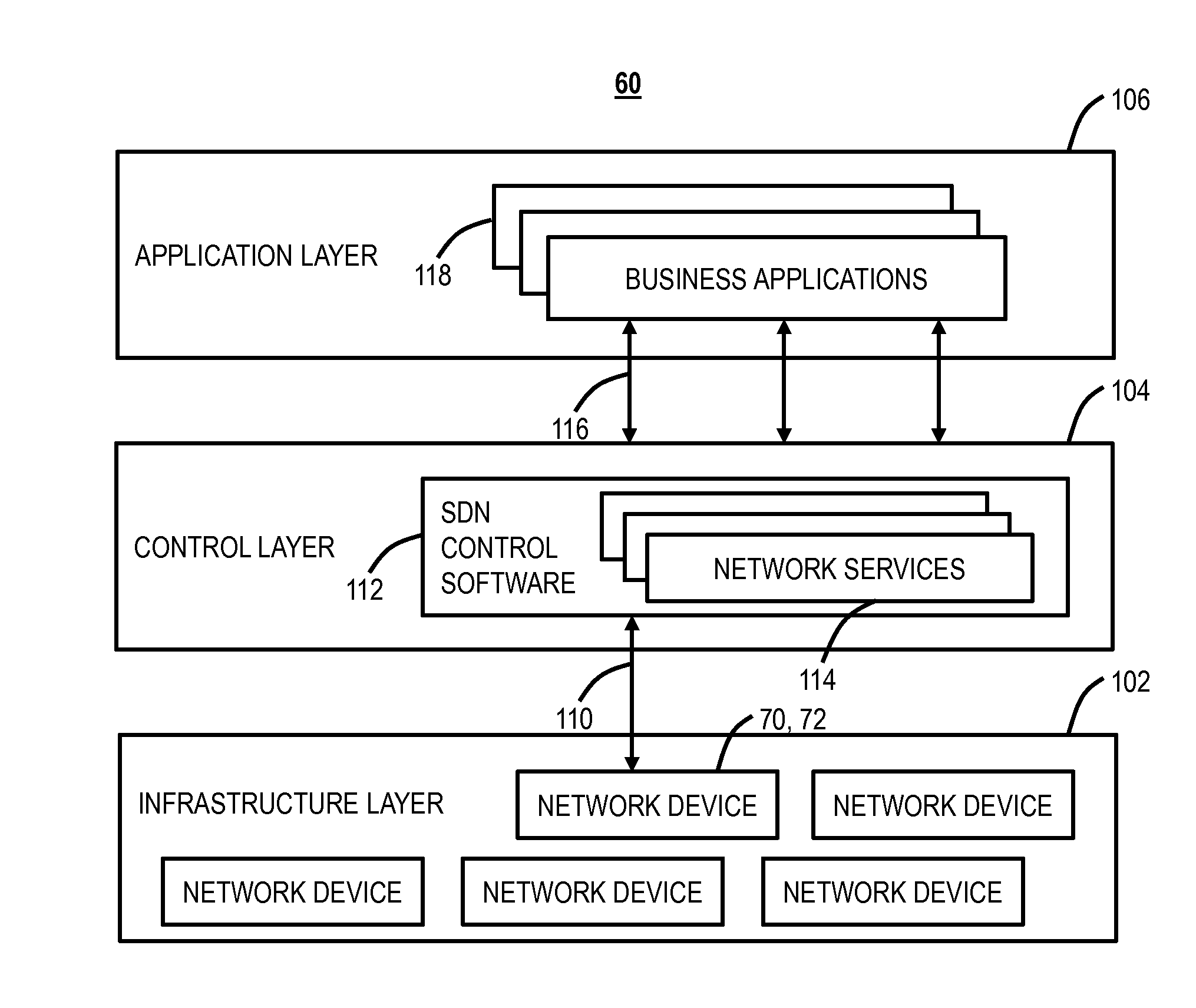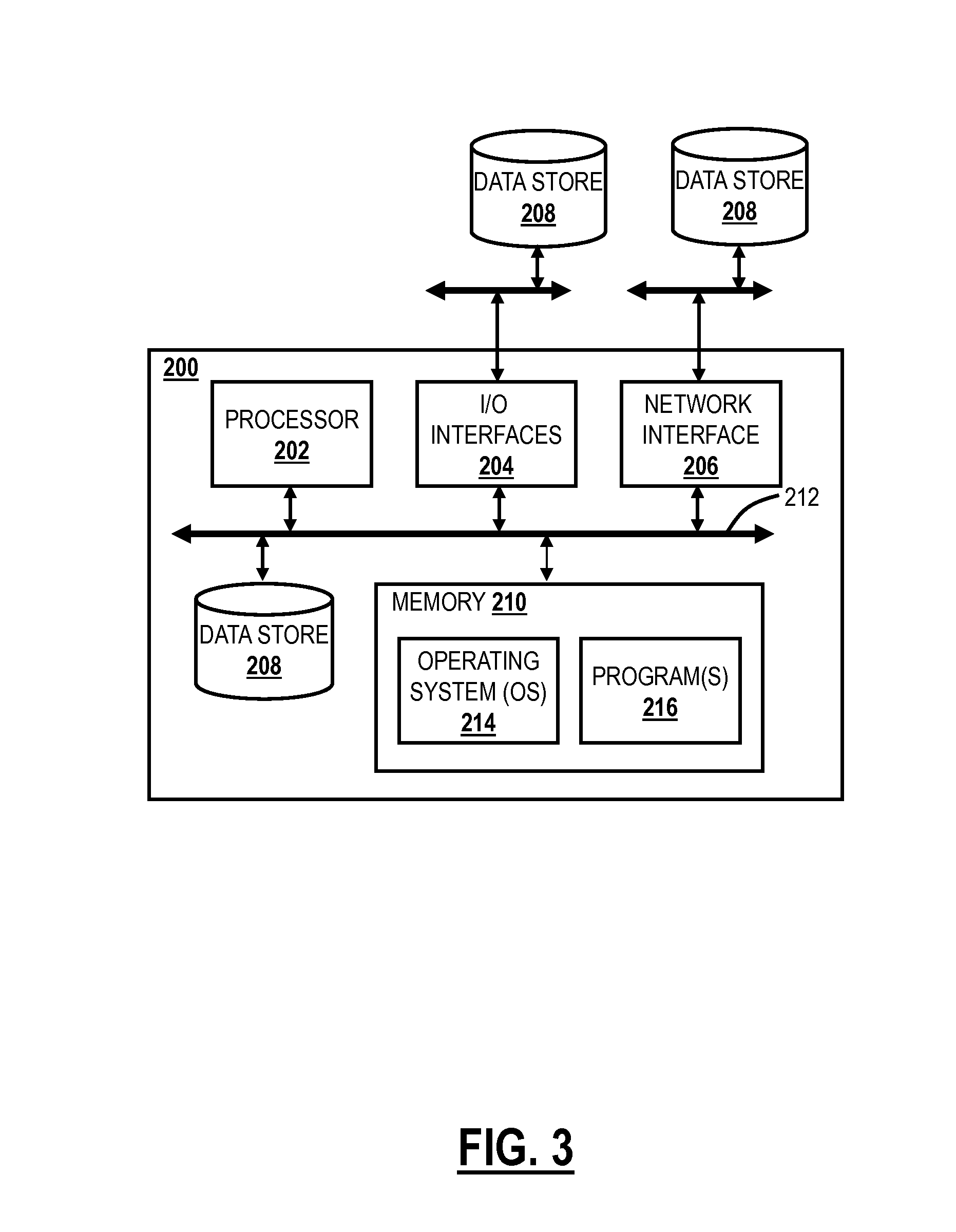Systems and methods to detect and defend against distributed denial of service attacks
a distributed denial of service and network technology, applied in the field of network systems and methods, can solve the problems of complex and overwhelming security challenges for organizations large and small, denial of service attacks, and difficulty in distinguishing legitimate “good” traffic from attack traffic, so as to facilitate convergence and facilitate peer quality measuremen
- Summary
- Abstract
- Description
- Claims
- Application Information
AI Technical Summary
Benefits of technology
Problems solved by technology
Method used
Image
Examples
Embodiment Construction
[0014]In various exemplary embodiments, systems and methods are described to detect and defend against DDoS or DRDoS attacks. The systems and methods relate to an SDN application, an SDN controller, and network elements to perform distributed Autonomous Systems (AS) Peer Quality (PQ) Optimization to detect and combat DDoS attacks. The SDN application can use the IP prefix advertised by the AS and the NetFlow / Internet Protocol Flow Information Export (IPFIX) data from the network elements to calculate the traffic for IP. The SDN application can reside in the AS such as, but not limited to, web content management systems (like Clickability etc.), subsequent content delivery networks (CDNs) and Tier-1 / 2 / 3 Internet Service Providers (ISPs). Each instance of the SDN application queries the average utilization from the AS to calculate ‘Peer Quality’ normalized to healthy traffic. When malicious traffic starts to flood the network, it results in a ‘Peer Quality’ deviation which is then pro...
PUM
 Login to View More
Login to View More Abstract
Description
Claims
Application Information
 Login to View More
Login to View More - R&D
- Intellectual Property
- Life Sciences
- Materials
- Tech Scout
- Unparalleled Data Quality
- Higher Quality Content
- 60% Fewer Hallucinations
Browse by: Latest US Patents, China's latest patents, Technical Efficacy Thesaurus, Application Domain, Technology Topic, Popular Technical Reports.
© 2025 PatSnap. All rights reserved.Legal|Privacy policy|Modern Slavery Act Transparency Statement|Sitemap|About US| Contact US: help@patsnap.com



